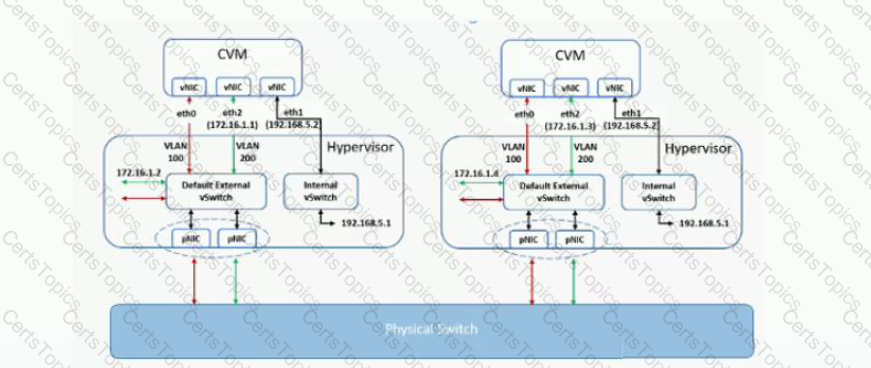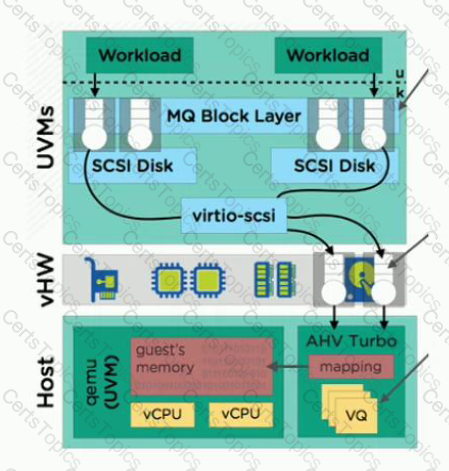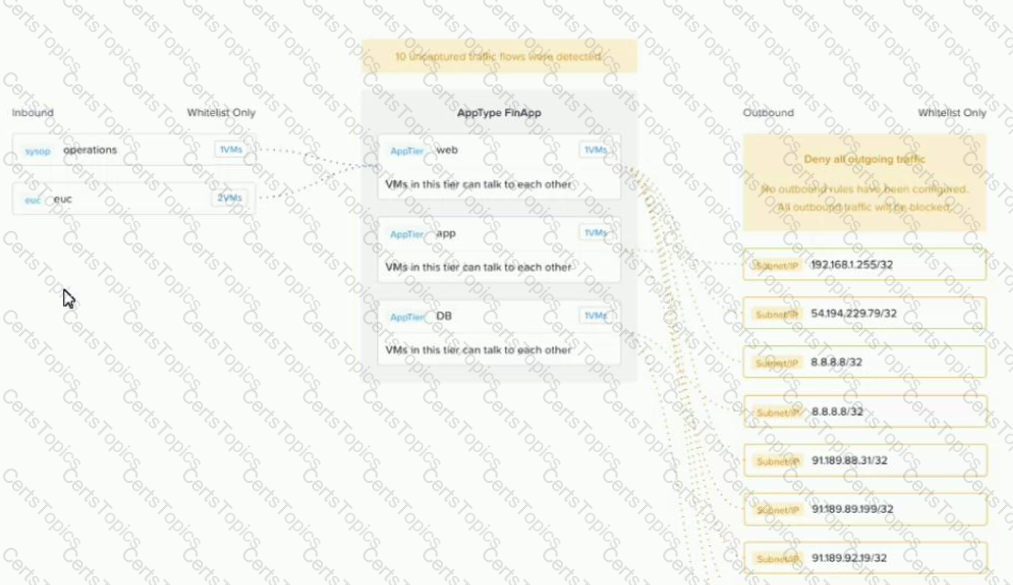An administrator is deploying several new application VMs to a Nutanix cluster. The application is very transactional with a 28/72 random, read/write ratio.
What should the administrator do?
An administrator receives an error indicating that the CVMs in the cluster are not syncing to any NTP servers. An investigation of the issue finds:
• The NTP servers are configured in Prism
• The time on all CVMs is the same
• Both the CVMs and AHV hosts are configured for the UTC time zone
Which two steps can be taken to troubleshoot this issue? (Choose two.)
Microsegmentation was recently enabled in a Nutanix environment. The administrator wants to leverage Prism Central to create a policy that will block all traffic, regardless of direction, between two groups of VMs identified by their category.
Which policy should be used to meet this requirement?
An administrator wants to utilize Network Visualization to monitor the physical and logical network on the Nutanix cluster. The first-hop switch has LLDP enabled. The network switch information is still not being displayed.
What is causing this problem?
An administrator deletes a large amount of data from a Volume Group presented to a Linux VM. The administrator notices that the deleted data has not been reclaimed as usable storage.
What action should be taken to reclaim the storage capacity?
An administrator is configuring software only. Data-at-Rest Encryption on their Nutanix cluster. They are planning to deploy a third-party key management server (KMS).
Where should this server be hosted?
Refer to the exhibit.

What is the purpose of eth2 on the CVMs?
After the migration, some SQL queries take longer to execute than prior to migration.
The following SQL best practices were applied while creating the SQL VM on Nutanix:
•8 vDisks per SQL server VM
•Database and Log files on separate vDisk
•2 TempDB database drives and 1 TempDB log drive
What should the administrator to do improve the SQL Server performance?
A customer has a four-node cluster and is using Volume Groups to provide storage services to a SQL cluster.
In the event of a CVM failure in the cluster, what is the expected IO path of the volume group’s iSCSI targets?
Refer to the exhibit. 
An administrator logged into Prism Element, notices the following in the home dashboard, and showing the exhibit.
Which action should the administrator take next?
Refer to the exhibit.

An administrator has an existing cluster and needs to improve performance using AHV Turbo. Which two items are required to achieve even greater performance? (Choose two.)
An administrator has a 32-node hybrid cluster with CPU, RAM and storage utilization of 80%. A database VM is configured with VM Flash.
What is causing this IO latency?
An administrator responsible for a VDI environment needs to investigate reports of slow logins. The administrator finds that increasing the number of vCPUs from 2 to 4 will reduce the login times. Production workloads are consuming 75% of the host CPU on the cluster. The administrator increases the vCPU count on all of the VDI VMs.
What are two impacts on the cluster? (Choose two.)
A VM is exhibiting one or more of the following baseline values based on the past 30 days:
• CPU usage < 20%
• CPU ready time < 5%
• Memory usage < 50% (moderately) or < 20% (severely)
• Memory swap rate = 0 Kbps
Which type of VM is being described?
Refer to the exhibit.

An administrator creates a security policy that isolates their financial application from accessing the Internet When viewing the policy in Prism Central, several connections from the application are outbound to the Internet.
What is causing this issue with the policy?
An administrator protected a DB VM running on a Nutanix cluster with NearSync Replication, which schedules to repeat every 15 minutes □ to a second site. The daily change rate is low. During nightly backups, the replication window is missed due to write volume.
Which two options describe the expected behavior? (Choose two.)